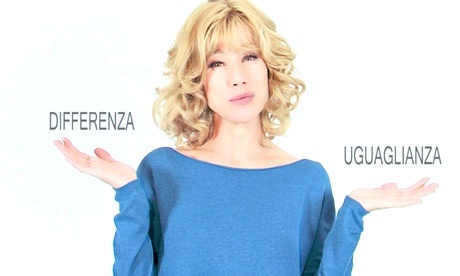The Vatican can’t seem to get it right: this week, the Vatican’s Pontifical Council for Culture is holding a plenary assembly to discuss “Women’s Culture: Equality and Difference,” but as the Boston Globe‘s Crux points out,
[Cardinal Gianfranco] Ravasi said women were invited to make presentations on various issues to be taken up in the plenary assembly, but since the members of the council are all men, that’s who will talk things out behind closed doors.
Ravasi defined the process as “women directing the dance,” with men performing the steps.
Those steps have been missteps, writes Vatican correspondent Inés San Martín, as the assembly planning has caused controversy with a number of promotional decisions.
Sylvia Poggioli reports on National Public Radio:
In December, organizers released a promotional video that features Italian actress Nancy Brilli, tossing her hair, looking at the camera coquettishly and asking in a sultry voice for women to contribute 60-second clips of their lives to be broadcast at the conference.
“I am sure you have asked yourself many times,” the sexy blonde says, “who you are, what you do, what you think about your being a woman, your strength, your difficulties, your body and your spiritual life.”
The video was criticized as presenting a “sexist stereotype of the modern Western woman”:
What are they thinking at the Vatican?” asked Phyllis Zagano of Hofstra University, writing in the National Catholic Reporter.
“Sexy sell has long gone by the boards in developed nations, and is totally unacceptable in Muslim countries,” she wrote.
(Poggioli’s report as well as the video are both on NPR’s website.)
And on top of that, the choice of a 1936 sculpture by Man Ray, “Venus Restored,” for the assembly’s website has also prompted “sparks,” according to a headline also in the National Catholic Reporter.
According to Crux:
…the website of the general assembly is illustrated with an image of “Venus Restored” by artist Man Ray, a plaster cast of a headless Venus tightly bound in ropes.
The 1936 sculpture is intended to depict woman as a subjugated sex object, but also as a creature who rises above men’s depictions. Critics have questioned the wisdom of using such an image for a Vatican discussion of women, suggesting it may send the wrong signal about the Church’s support for female emancipation.
Micol Forti, director of the Contemporary Art collection of the Vatican Museum, said that the sculpture was chosen among other possibilities because it represents the past as an “anchor to generate new ideas.”
The Pontifical Council for Culture has material for the assembly online here.
Posted by Cara Ellen Modisett

